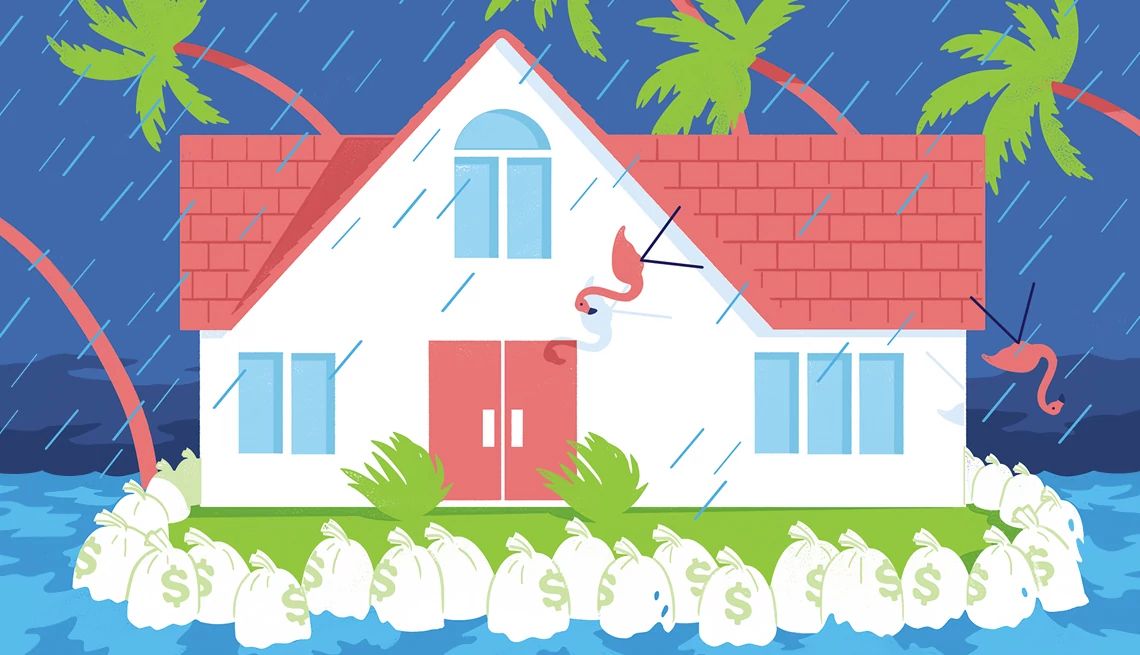AARP Hearing Center


Living in an oceanfront condo on Florida’s Space Coast was Jim McGuigan’s retirement dream, so 12 years ago he and his wife, Debbie, sold their family home in Orlando and moved to Cocoa Beach. But earlier this year, the couple packed up and moved back inland.
Behind that was insurance. Premiums for the high-rise where they owned a unit had tripled in recent years; that increase, along with repairs necessary to maintain coverage, drove their condo association fees up 141 percent over the same period. The prospect of even higher insurance-related costs prompted the McGuigans’ return to Central Florida, where they’ll spend $4,760 a year less in insurance and fees. “When we bought the condo, I didn’t think I was ever going to move again,” says Jim, 66. “But insurance and other things have made the cost of living there too much.”
The McGuigans joined millions of Americans who in recent years have been forced to deal with home insurance premium increases and fewer choices as more carriers exit high-risk areas and decline to renew policies.
From 2021 to 2024, premiums rose an average of 24 percent in the U.S. and were higher in 95 percent of ZIP codes, reports the Consumer Federation of America (CFA). While Floridians pay the highest average annual premiums, at $9,462, noncoastal states like Arizona, Illinois and Pennsylvania saw premiums grow by 44 percent or more. Thanks largely to these increases, nearly 1 in 7 owner-occupied U.S. homes are uninsured, estimates LendingTree. And other homeowners are likely struggling: A Federal Reserve Bank of Dallas study found that mortgage delinquencies increase 8 percent in the year following a typical price hike.
Because mortgage and home equity lenders require insurance, paying these premiums is non-negotiable for most homeowners. But the following strategies can help reduce how much of your money insurance consumes.
Review coverage
Along with raising your deductible — a standard way to lower premiums — check that your various coverage amounts don’t leave you overinsured. You may be able to tailor your policy’s default limits to reflect just what you have, says Alyssa Bourgeois, an independent broker with the Marsh McLennan Agency in Metairie, Louisiana. You can try this with other-structures coverage, which protects things like fences and detached garages, or with your contents coverage. Before making the change, however, weigh the consequences.
“Dropping personal property coverage from 75 percent of your dwelling limit to 25 percent might only save you $100 a year,” says Peter O’Keefe, an independent broker with Connor, Alexander and Sullivan Insurance in San Francisco. “Do you really want to give up that much coverage to save less than $10 a month?”
Check the market
“If you feel like you’re getting a bad deal, shop around,” says Michael DeLong, a research and advocacy associate with CFA. Annual rates from different insurers can vary by $1,000 or more for identical coverage, NerdWallet found. Many insurers make it easy to get a quick quote: Visit their website and plug in some basic information. You can use sites like Insure.com, Policygenius or The Zebra to see offers from multiple carriers simultaneously. Also, your state insurance department may provide rate comparison tools.

































































You Might Also Like
99 Great Ways to Save 2025 Edition
Stretch your dollars — and cut costs on groceries, travel, entertainment and more
Great Ways to Be a Better Online Shopper
Compare prices, hunt for digital coupons and use these other tactics before clicking “buy”
Mom Wants Me to Have Her Lladró Figurines
Can I sell them and pocket the money?